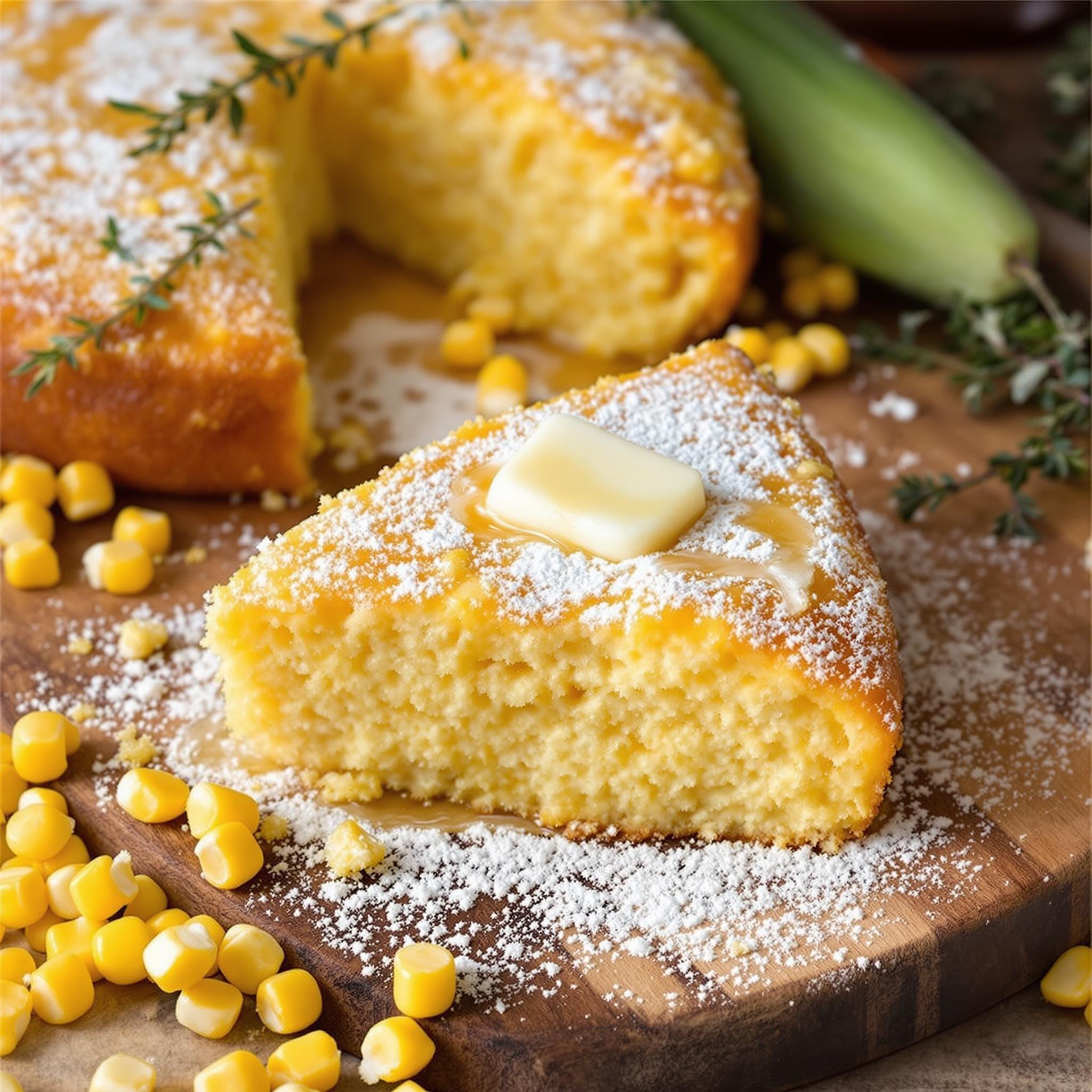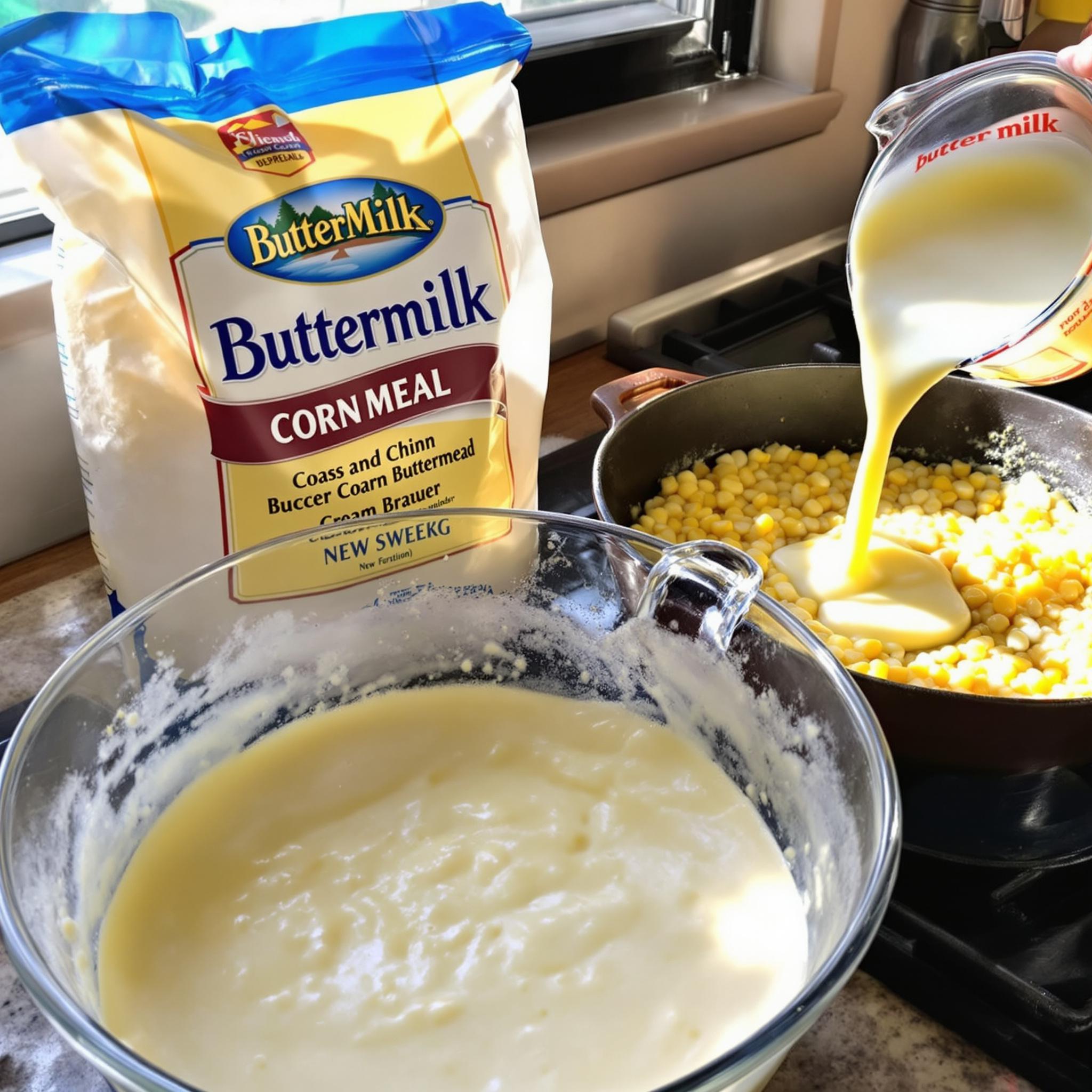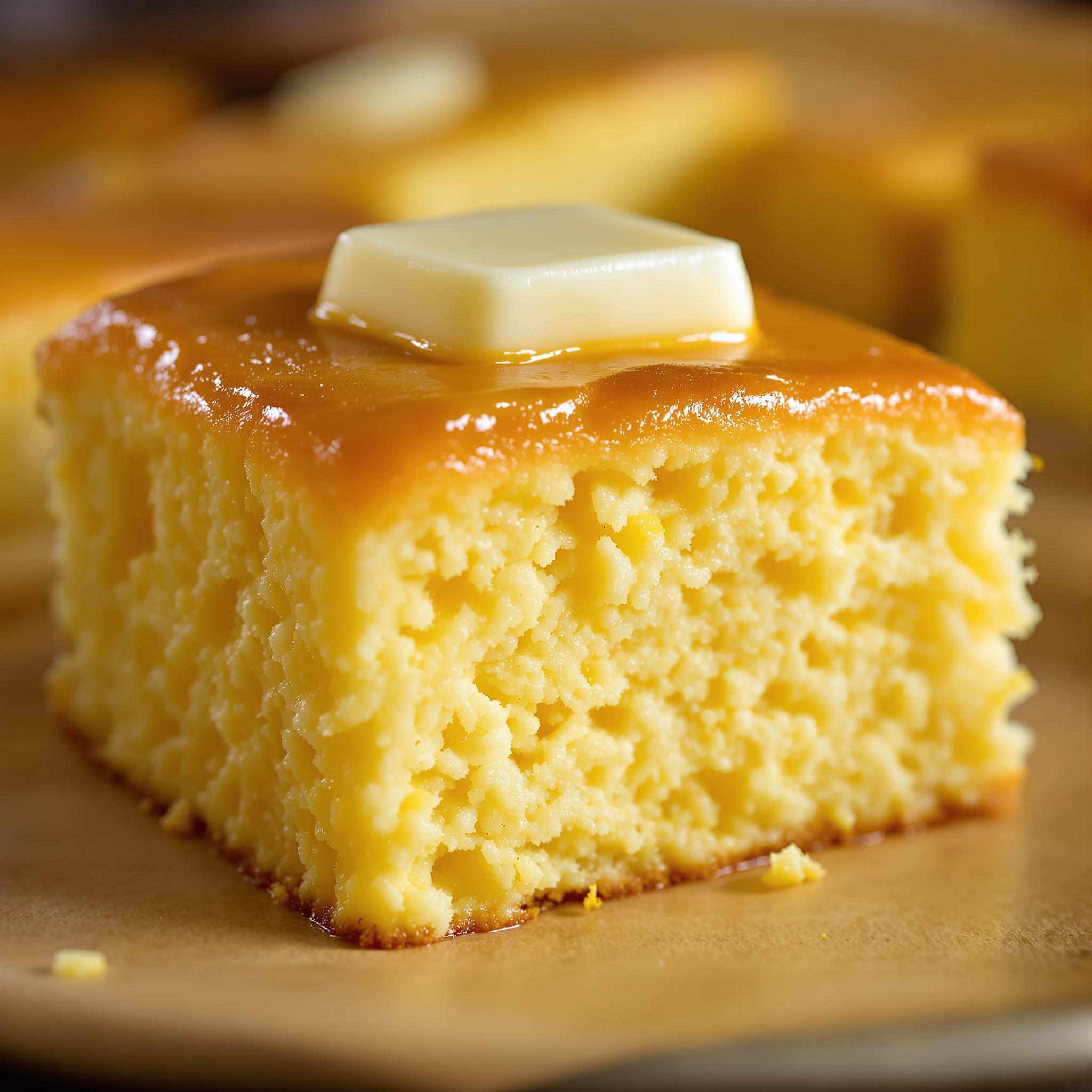
Introduction to Grandmother’s Buttermilk Cornbread
There’s something magical about the aroma of freshly baked cornbread wafting through the kitchen. My grandmother’s buttermilk cornbread recipe holds a special place in my heart—it’s a comforting dish that reminds me of family gatherings and cozy Sunday dinners. This cornbread is golden, slightly crispy on the edges, and perfectly moist inside. Whether you’re new to baking or a seasoned pro, this recipe is simple, foolproof, and absolutely delicious. Variations like honey-glazed cornbread or cheesy jalapeño cornbread make it versatile for any occasion.
The History Behind Buttermilk Cornbread
Cornbread has deep roots in Southern American cuisine, where it was traditionally made with cornmeal, a staple ingredient for Native Americans. Over time, settlers added their own twists, incorporating ingredients like buttermilk and eggs to create richer textures. My grandmother’s version reflects this blend of tradition and innovation—she always insisted on using fresh buttermilk for its tangy flavor and tenderizing properties. I remember her teaching me how to mix the batter just right, ensuring it wasn’t overworked. It’s these little details that make this cornbread truly unforgettable.
Why You’ll Love This Cornbread Recipe
This buttermilk cornbread is everything you want in a side dish: buttery, flavorful, and easy to whip up. Its simplicity makes it perfect for beginners, while its versatility allows experienced cooks to experiment with add-ins like cheese, herbs, or spices. Plus, there’s nothing quite like the satisfaction of pulling a warm, golden loaf out of the oven and watching everyone dig in. Trust me, once you try this recipe, it’ll become a staple in your household!
Perfect Occasions to Bake Buttermilk Cornbread
From holiday feasts to casual weeknight dinners, this cornbread fits seamlessly into any meal. Serve it alongside chili or soup for a hearty winter dinner, or bring it to potlucks and barbecues as a crowd-pleasing side. It’s also a wonderful addition to brunch spreads, especially when paired with scrambled eggs and bacon. No matter the occasion, this cornbread never fails to impress.
Ingredients for Grandmother’s Buttermilk Cornbread
- 1 cup all-purpose flour
- 1 cup yellow cornmeal
- 1/4 cup granulated sugar
- 1 tablespoon baking powder
- 1/2 teaspoon salt
- 1 cup buttermilk
- 1/3 cup melted butter
- 2 large eggs
Substitution Options for Flexibility
If you don’t have buttermilk on hand, mix 1 cup of milk with 1 tablespoon of lemon juice or vinegar and let it sit for 5 minutes to mimic the tangy flavor. For a gluten-free option, replace the all-purpose flour with a gluten-free blend. If you’re cutting back on sugar, reduce it to 2 tablespoons or substitute with honey. Feel free to swap melted butter with coconut oil for a dairy-free alternative.
Preparation Steps
Step 1: Preheat and Prepare Your Pan
Begin by preheating your oven to 400°F (200°C). While the oven heats up, grease an 8×8-inch baking pan with butter or nonstick spray. This ensures the cornbread slides out effortlessly after baking. Pro tip: For extra crispiness, sprinkle a thin layer of cornmeal onto the greased pan before adding the batter.
Step 2: Mix Dry Ingredients
In a large mixing bowl, whisk together the flour, cornmeal, sugar, baking powder, and salt. The combination of fine flour and coarse cornmeal gives the bread its signature texture—soft yet slightly gritty. Be sure to evenly distribute the dry ingredients so every bite is perfectly balanced. Pro tip: Sifting the dry ingredients helps prevent lumps in the batter.
Step 3: Combine Wet Ingredients
In a separate bowl, beat the eggs, then stir in the buttermilk and melted butter. The buttermilk adds a delightful tang that complements the sweetness of the sugar, while the butter lends richness. Slowly pour the wet mixture into the dry ingredients, stirring gently until just combined. Overmixing can lead to dense cornbread, so stop as soon as the batter comes together.
Step 4: Bake to Golden Perfection
Pour the batter into the prepared pan and smooth the top with a spatula. Pop it into the oven and bake for 20-25 minutes, or until the edges are golden brown and a toothpick inserted in the center comes out clean. As it bakes, your kitchen will fill with the irresistible scent of warm cornbread—a true sign that something amazing is happening in the oven!

Chef’s Tip for Perfect Cornbread
To elevate your cornbread, brush the top with a little melted butter as soon as it comes out of the oven. This not only enhances the flavor but also creates a beautiful glossy finish. Another secret? Let the batter rest for 10 minutes before baking—it allows the cornmeal to absorb moisture, resulting in a lighter texture.
Time Required for Preparation
- Prep Time: 10 minutes
- Cooking Time: 25 minutes
- Total Time: 35 minutes
Nutritional Information
Per serving (makes 9 slices): Calories: 200 | Protein: 4g | Carbohydrates: 28g | Fat: 9g | Fiber: 1g | Sugar: 8g
Extra Information About Cornbread
Did you know that cornbread was often cooked in cast iron skillets during pioneer times? The skillet not only distributes heat evenly but also creates a wonderfully crunchy crust. Today, many chefs still swear by this method for achieving the best results.
Necessary Tools for Baking Cornbread
- 8×8-inch baking pan or cast iron skillet
- Mixing bowls
- Whisk
- Spatula
- Toothpick or cake tester
Storage Instructions
Once cooled, wrap the cornbread tightly in plastic wrap or store it in an airtight container to keep it fresh. At room temperature, it stays good for up to two days. For longer storage, refrigerate it for up to a week. To freeze, slice the cornbread and place the pieces in a freezer-safe bag; they’ll last for up to three months.
When reheating, avoid microwaving, as it can make the cornbread soggy. Instead, warm it in the oven at 350°F (175°C) for about 10 minutes. This restores its original crispness and flavor.
If you’ve stored it in the fridge, let it come to room temperature before reheating. This ensures even warming without drying out the interior.
Tips and Tricks for Better Cornbread
For a sweeter twist, drizzle honey or maple syrup over the finished product. Adding shredded cheddar cheese or diced jalapeños to the batter takes it to another level. Always use fresh baking powder for optimal rise, and don’t skip the resting step—it really does make a difference!

Serving Suggestions
- Serve warm with a pat of butter melting into each slice.
- Pair it with a bowl of creamy chicken and dumplings or spicy chili.
Healthier Alternatives for Cornbread
Looking to lighten up this classic? Here are six variations:
- Whole Grain Cornbread: Replace half the all-purpose flour with whole wheat flour for added fiber.
- Low-Sugar Version: Cut the sugar in half or replace it with stevia.
- Vegan Cornbread: Use plant-based milk and flax eggs instead of regular eggs.
- Gluten-Free Cornbread: Swap the flour with a certified gluten-free blend.
- Herb-Infused Cornbread: Add chopped rosemary or thyme for a savory touch.
- Spicy Cornbread: Stir in diced jalapeños and a dash of cayenne pepper.
Common Mistakes to Avoid
Mistake 1: Overmixing the Batter
Overmixing leads to tough, dense cornbread because it activates too much gluten in the flour. To avoid this, stir the batter gently until just combined. A few lumps are okay—they’ll disappear during baking.
Mistake 2: Skipping the Resting Step
Letting the batter rest allows the cornmeal to hydrate fully, which improves the texture. Don’t rush this step—it’s worth the wait!
Mistake 3: Using Expired Baking Powder
Old baking powder won’t provide the necessary lift, leaving your cornbread flat. Test yours by sprinkling a bit into water—if it fizzes, it’s still good.
Mistake 4: Overbaking
Overbaked cornbread turns dry and crumbly. Check for doneness a minute or two before the recommended time to ensure it stays moist.
Frequently Asked Questions
Can I make this recipe vegan?
Absolutely! Substitute the eggs with flax eggs and use plant-based milk instead of buttermilk. Coconut oil works well as a butter replacement.
How do I know when the cornbread is done?
Insert a toothpick into the center—if it comes out clean or with a few crumbs clinging to it, the cornbread is ready.
Can I use a different type of milk?
Yes, though buttermilk provides the best flavor and texture. Regular milk mixed with lemon juice or vinegar is a great substitute.
What size pan should I use?
An 8×8-inch square pan works perfectly, but a round cake pan or cast iron skillet can also be used.
Why is my cornbread too dense?
Density often results from overmixing or expired baking powder. Be gentle when combining the ingredients and always check your leavening agents.
Can I freeze leftover cornbread?
Definitely! Slice it first, then freeze in a sealed bag for up to three months. Reheat in the oven for best results.
Is cornbread gluten-free?
Not traditionally, but you can make it gluten-free by using a gluten-free flour blend.
Can I add cheese to the batter?
Of course! Shredded cheddar or Monterey Jack adds a delicious savory element.
Why does my cornbread taste bland?
You might need more salt or sugar. Adjust these according to your taste preferences next time.
What dishes pair well with cornbread?
It pairs beautifully with soups, stews, barbecue, and even breakfast items like scrambled eggs or sausage gravy.
Conclusion
Grandmother’s buttermilk cornbread is more than just a recipe—it’s a celebration of tradition, flavor, and warmth. With its simple ingredients and easy preparation, it’s a dish anyone can master. Whether you stick to the classic version or experiment with healthier alternatives, this cornbread promises to delight your taste buds and bring joy to your table. So grab your apron, gather your loved ones, and get ready to create memories one slice at a time!
